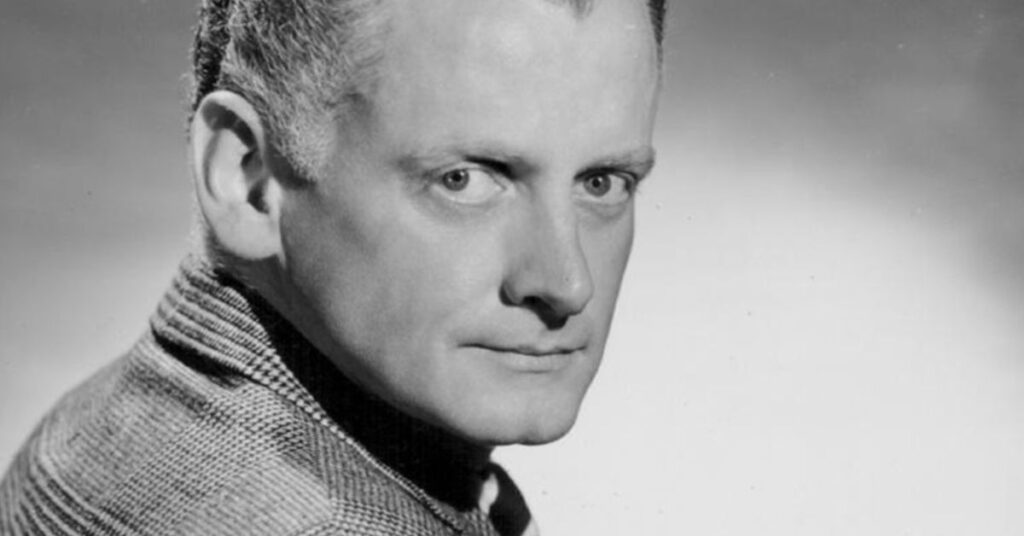Art Carney’s net worth was estimated to be around $16 million at the time of his passing in 2003. This wealth was accumulated through his extensive career in television, film, radio, and stage performances. His iconic roles in The Honeymooners and Harry and Tonto, along with numerous awards, contributed significantly to his financial success.
Art Carney, the beloved actor best known for his iconic role as Ed Norton in The Honeymooners, amassed an impressive net worth of $16 million throughout his career. His financial success was a testament to his versatility, spanning decades in film, television, radio, and stage performances. From humble beginnings in vaudeville to an Oscar-winning role, Carney’s wealth reflects his enduring impact on American entertainment.
Art Carney: The Legendary Actor Who Defined American Comedy

Art Carney, an American actor, comedian, and vaudeville performer, was one of the most beloved and critically acclaimed entertainers of his time. With a career spanning over six decades, Carney brought laughter and joy to millions of people through his work on television, film, radio, and stage. Best known for his portrayal of Ed Norton in the classic sitcom The Honeymooners, Carney’s legacy extends far beyond his comedic roles, with his acting career including dramatic performances that earned him both critical and commercial acclaim, including an Academy Award for Best Actor and five Emmy Awards.
This in-depth exploration of his life will delve into the many aspects of his storied career, his personal struggles, and the enduring influence he has left on American entertainment. From his early years on vaudeville stages to his groundbreaking television performances and award-winning film roles, Carney’s life is a testament to resilience, talent, and versatility.
Early Life and Career Beginnings
Arthur William Matthew Carney, born on November 4, 1918, in Mount Vernon, New York, grew up in a close-knit Irish-Catholic family. His childhood in a working-class household shaped much of his later comedic and dramatic performances, particularly in his portrayal of relatable, everyman characters. Carney developed an early interest in acting and comedy, frequently entertaining family and friends with impressions and impersonations.
Vaudeville: The Foundation of a Career
Before transitioning into radio and television, Carney honed his craft in vaudeville, a popular form of variety entertainment in the early 20th century that featured a mixture of comedians, singers, dancers, and actors. Vaudeville provided Carney with a platform to develop his physical comedy, a key aspect of his later roles. His natural ability to mimic voices and capture the essence of famous personalities made him a standout performer in the vaudeville circuit.
The discipline and timing he learned from performing in front of live audiences laid the groundwork for his future success in other entertainment mediums. Vaudeville’s emphasis on versatility and improvisation was crucial in shaping Carney’s skillset, allowing him to transition seamlessly between comedic and dramatic roles later in his career.
Read this blog: Tokyo Toni Net Worth
The Rise in Radio and Early Television
Following his success in vaudeville, Carney transitioned into radio, which was at its peak in the 1940s. Radio offered him a new medium to showcase his vocal talents, and he quickly became a prominent figure in the world of radio broadcasting. As a voice actor, Carney took on a wide array of roles, demonstrating his ability to bring characters to life through voice alone. His work on radio programs like The March of Time and The Henry Morgan Show helped cement his reputation as a versatile and talented actor.
| Key Milestones in Art Carney’s Early Career | Details |
| Born | November 4, 1918, Mount Vernon, New York |
| First Career Path | Vaudeville performer, radio announcer, voice actor |
| Major Breakthrough Role | Ed Norton in The Honeymooners |
| Accolades | 5 Emmy Awards, 1 Academy Award for Harry and Tonto |
Carney’s ability to switch effortlessly between comedy and drama on the radio opened doors for him in the burgeoning television industry. As the entertainment landscape shifted from radio to television in the early 1950s, Carney made his debut on the small screen, which led to the most iconic role of his career: Ed Norton.
The Honeymooners: Art Carney’s Iconic Role
Carney’s career skyrocketed in 1955 when he was cast as Ed Norton in the legendary sitcom The Honeymooners, alongside comedian Jackie Gleason. The series, which began as a skit on The Jackie Gleason Show before evolving into its own standalone program, became an instant hit. Carney’s portrayal of Norton, a lovable but bumbling sewer worker, provided the perfect comedic foil to Gleason’s Ralph Kramden, a hot-headed, working-class bus driver.
Why Ed Norton Became Iconic

Carney’s performance as Norton became one of the defining comedic characters of the 1950s, and his influence on television comedy is still felt today. Norton’s physical comedy, exaggerated mannerisms, and innocence made him an endearing character that audiences couldn’t get enough of. The chemistry between Carney and Gleason was a key factor in the show’s success. Their friendship, built on the classic trope of a bombastic leader and a goofy sidekick, brought warmth and authenticity to the series.
Norton’s character became so iconic that Carney’s portrayal set the standard for many sidekick roles in sitcoms that followed. His timing was impeccable, often using simple, everyday tasks—such as signing a check or starting a game of pool—as the basis for slapstick routines.
| Characteristics that Made Ed Norton Iconic | Details |
| Physical comedy | Exaggerated movements, facial expressions |
| Mannerisms | Signature awkwardness in everyday tasks |
| Chemistry with Ralph (Jackie Gleason) | Deep friendship, comically mismatched personalities | |
| Role as a lovable everyman | Relatable and endearing working-class character |
The Honeymooners was a relatively short-lived series, running for just 39 episodes, but its impact on American television was profound. Carney won several Emmy Awards for his role as Norton, and the show’s reruns remain popular decades after its original broadcast. The show was pivotal in defining the sitcom genre, and Carney’s performance continues to influence comedic actors today.
Transition to Film: Harry and Tonto and an Oscar Win

While Carney was best known for his work on television, his talents extended to the silver screen as well. In 1974, Carney took on the lead role in Harry and Tonto, a film that marked a significant shift in his career. The movie tells the story of Harry Coombes, an elderly man who embarks on a cross-country journey with his pet cat, Tonto, after being forced out of his New York City apartment.
Academy Award for Harry and Tonto
Carney’s performance in Harry and Tonto was both heartfelt and poignant, revealing a depth to his acting abilities that many had not seen before. His portrayal of Harry, a man navigating the challenges of aging and the changing world around him, earned him widespread critical acclaim. In 1975, Carney won the Academy Award for Best Actor, beating out well-established actors such as Al Pacino and Dustin Hoffman. His Oscar win was a surprise to many, as Carney was primarily known for his comedic work, but his performance in Harry and Tonto proved that he could excel in more dramatic roles.
| Key Details About Harry and Tont | Description |
| Character | Harry Coombes, an elderly man with his cat Tonto |
| Themes | Aging, friendship, loneliness, change |
| Awards | Academy Award for Best Actor (1975) |
| Critical Reception | Praised for emotional depth, humor, and relatability |
Carney’s Oscar win solidified his place in film history, demonstrating that he could successfully transition from television to film while showcasing the full range of his acting talents. The role of Harry allowed Carney to balance humor with melancholy, offering audiences a character that was both endearing and deeply human.
Read this blog: Bobby Bare Net Worth
Later Career: Return to Television, Film, and Stage
Even after achieving great success in both television and film, Carney continued to work throughout the 1980s and 1990s. He appeared in various television shows and films, including The Muppet Movie (1979), Firestarter (1984), and Last Action Hero (1993), where he played supporting roles that highlighted his versatility.
A Return to Broadway
Carney also returned to the stage, taking on roles in Broadway productions that allowed him to reconnect with his roots in live performance. Notable stage appearances included The Prisoner of Second Avenue and Take Her, She’s Mine, both of which showcased Carney’s continued ability to captivate audiences with his charm and humor.
Personal Struggles and Resilience
Despite his professional success, Carney faced several personal challenges throughout his life, including a long battle with alcoholism. His struggles with addiction affected his personal relationships, and he was married twice to Barbara Freed, the love of his life. Although their relationship was marked by difficulties, the couple shared a deep bond and had four children together.
Carney’s ability to persevere through personal adversity while maintaining a successful career is a testament to his strength of character. His resilience allowed him to continue working into his later years, and his dedication to his craft earned him the admiration of fans and colleagues alike.
Art Carney’s Legacy: The Impact on American Comedy and Film

Art Carney’s contributions to American entertainment are immeasurable. As a pioneer of early television comedy, his work helped shape the sitcom genre, particularly through his role as Ed Norton on The Honeymooners. His portrayal of Norton set a high standard for comedic performances, influencing generations of actors who followed in his footsteps.
Influence on Future Generations of Comedians
Carney’s physical comedy, impeccable timing, and ability to blend humor with pathos have inspired countless comedians and actors, including Jim Carrey, Steve Martin, and Robin Williams. His work on The Honeymooners established him as one of the most influential figures in television history, and his performances continue to be studied and admired by aspiring performers.
Awards and Honors
In addition to his Academy Award and five Emmy Awards, Carney received numerous accolades throughout his career, including a star on the Hollywood Walk of Fame. His contributions to radio, television, film, and theater have left an indelible mark on the entertainment industry.
| Art Carney’s Major Awards and Honors | Description |
| Academy Award | Best Actor for Harry and Tonto (1975) |
| Emmy Awards | 5 Emmy Awards for work on television |
| Hollywood Walk of Fame | Star awarded for contributions to the entertainment industry |
Conclusion:
Art Carney’s net worth of $16 million highlights the financial success he achieved through a remarkable career in entertainment. His diverse roles—from the comedic Ed Norton to the dramatic Harry Coombes—showcase his versatility and enduring appeal. Carney’s wealth is a fitting tribute to his talent, hard work, and the immense joy he brought to audiences over the decades.
Carney’s financial achievements not only reflect his professional success but also underscore his influence on the entertainment industry. Despite personal challenges, his ability to consistently deliver memorable performances ensured his place as a beloved figure in Hollywood. His substantial net worth remains a testament to his legacy as a pioneering and versatile performer.
Frequently Asked Questions
What happened to Art Carney?
Art Carney passed away on November 9, 2003, at the age of 85 due to complications from lung cancer.
What was Jackie Gleason’s net worth when he died?
Jackie Gleason’s net worth at the time of his death in 1987 was estimated to be around $10 million.
What was Art Carney known for?
Art Carney was best known for his role as Ed Norton on the classic sitcom The Honeymooners and for his Academy Award-winning performance in Harry and Tonto.
Did Art Carney serve in WWII?
Yes, Art Carney served in World War II as a member of the U.S. Army, where he worked in the entertainment division, performing for troops.












